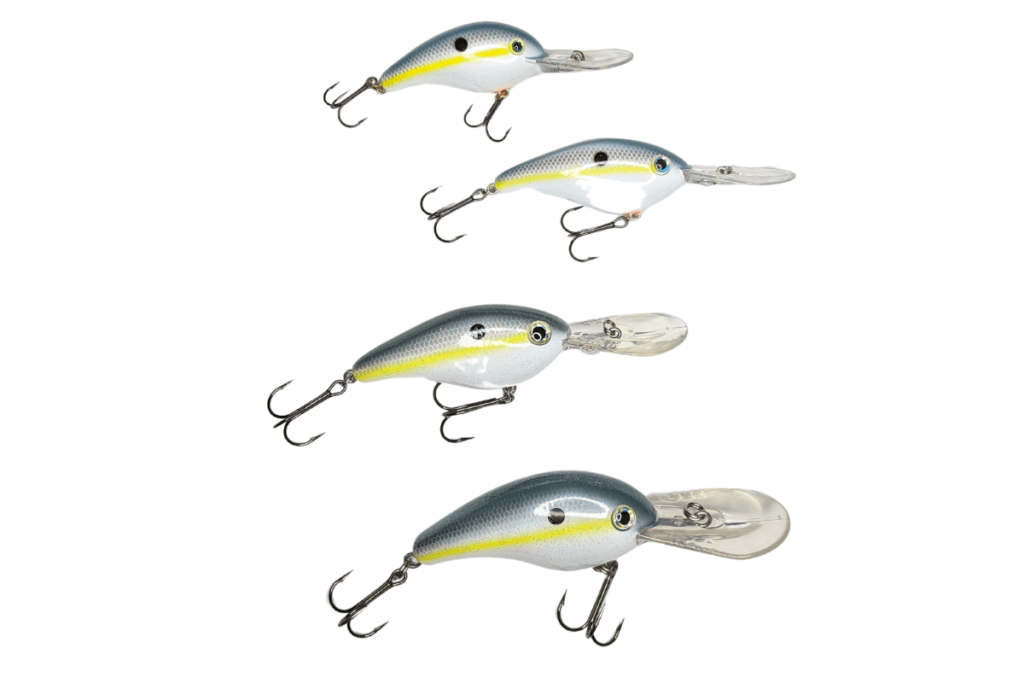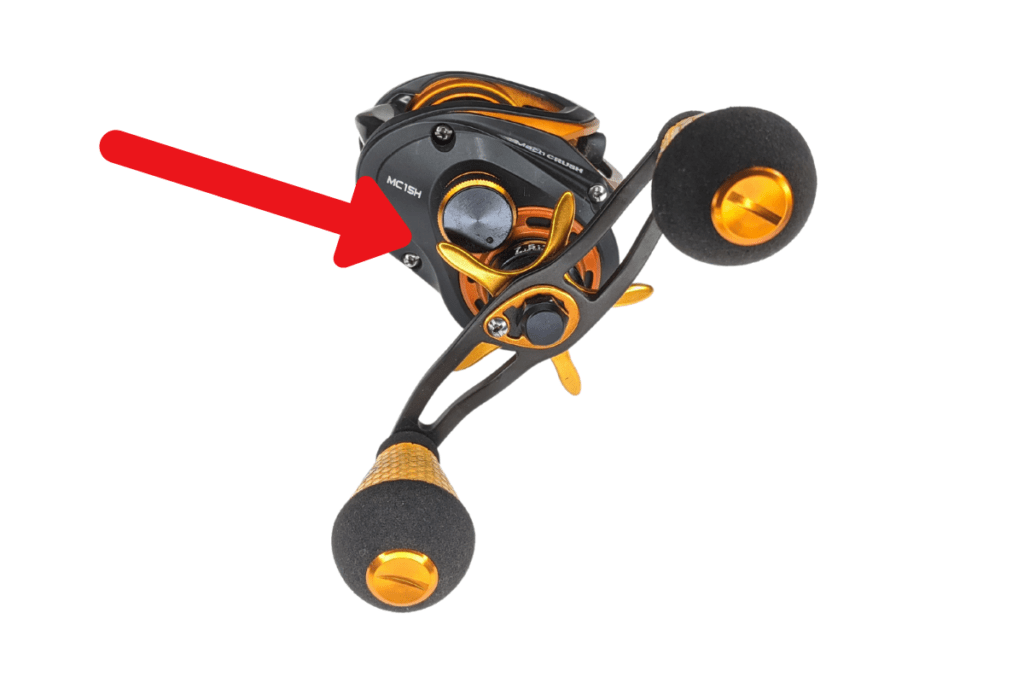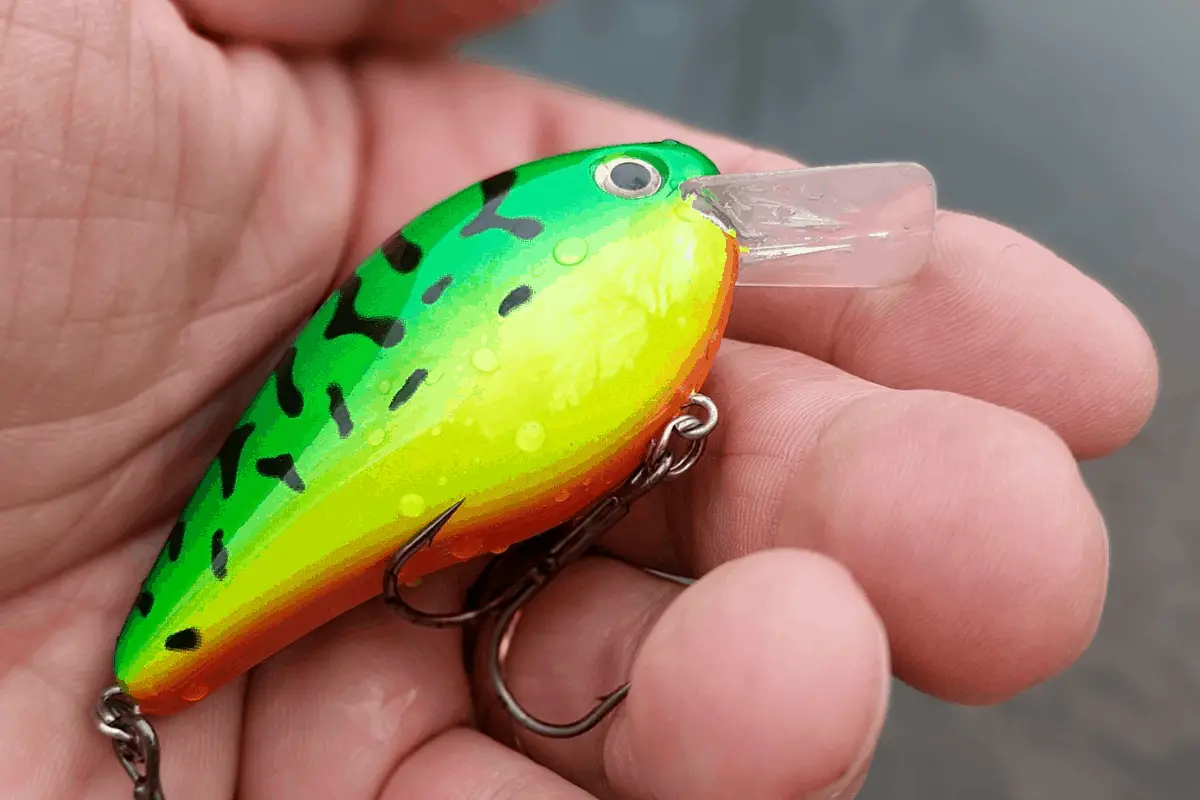There are many different bass fishing lures on the market. Crankbaits are one of the most common and often used lures out there.
Crankbaits are a solid body lure, made from wood or plastic, that imitates both baitfish and crawfish. Crankbaits are excellent at not only catching bass but finding them. There are crankbaits that cover all depths of the water column and they can be used in a variety of conditions.
History of the Crankbait
The modern crankbait, as we know it, can be traced back to a little lure company from Garrett, IN. Around 1915, the Creek Chub Bait Company was formed by three friends who loved to fish.
Henry Dills, George Schulthess, and Carl Heinzerling were innovators of their time. These entrepreneurs are credited for making the first diving crankbait. They attached a metal lip to a wooden bait to get it to dive below the surface.
They named their lure, The Wiggler.
Some of the best crankbait anglers in the world today, like David Fritts, may have never made a name if it wasn’t for that innovative lure from almost a century ago.
Modern Crankbaits
If you walk down any aisle of a major tackle retailer today, your mind will be sizzling on overdrive as it takes in the thousands of models, color variations, and options on the market.
Technology has evolved from crankbaits mainly manufactured from wood, like balsa, to all plastic baits that run true right out of the box. Lures are made that cover all depths and the bills are designed to bounce and deflect off all sorts of cover.
The body styles create sound signatures that elicit reactions from the lateral lines of bass while a plethora of rattles knock around on the inside of these plastic bodies.
Many top professionals have won a lot of money fishing a crankbait

How and Why Crankbaits Work so Well
This lure is designed to be deflected and bounced off of cover and structure. When this happens, the bass often react to the lures erratic action and cannot help but to eat it.
You may be wondering, “How do those trebles not get hung on everything?”
That is the magic, and importance, of the bill. Not only does it create the depth that anglers are looking for, it keeps the nose of the bait pitched downwards and guards the trebles.
A properly designed bill can hit something, like a rock, and bounce the lure off without ever getting snagged. An experienced crankbait angler can throw these lures all day and rarely get hung up.
Crankbaits also mimic a bass’s main forage base accurately. Whether an angler is attempting to mimic baitfish or crayfish, the crankbait is a perfect choice.
Types of Crankbaits
For the sake of this article, I am going to focus on crankbaits that are considered divers. Topwaters and jerkbaits are worthy of another blog on their own.
Deep Divers
This category might be the most popular body and lip design for this venerable lure. Manufacturers have developed entire series of lures that target any depth you may want to hit.
Popular Deep Diving Crankbaits
This is only a partial list
| Manufacturer | Model | Depths |
| Strike King | XD Series | 10’+ to 25’+ |
| Rapala | DT Series | 4’+ to 16’+ |
| Berkley | Dredger Series | 8.5’+ 25.5’+ |
| Bomber | Model A Series | 2’+ to 10’+ |
| Norman | DD Series | 12’+ to 17’+ |
Square Bills
These crankbaits are named after their square-shaped bill. A lure with this type of lip design bounces and bangs off shallow cover with ease and is a favorite among serious anglers all over the world.
Square bills can be crawled over wood, ripped through grass, and pound rocks.
Equipment Used For Crankbait Fishing
The proper rod, reel and line make a huge difference in how crankbaits perform. Having the right equipment in hand will not only increase your odds of getting bit, but landing that feisty bass as well.

The Reel
I recommend using a low-gear ratio reel for any type of crankbait fishing. As anglers, we often reel these lures in too quickly and that effects the baits action as well as the number of strikes that we get.
A reel somewhere around a 5.3:1 gear ratio is ideal. This means there is less line recovered per turn of the handle and the lure is most likely to have the maximum amount of action.
The Line
Depending on the depth you want to target, the line can make a significant difference. Monofilament is popular because it is much less expensive than fluorocarbon or braid.
Monofilament tends to float and stay higher in the water column. It also has more natural stretch to it. If you are wanting your lure to run a little shallower, mono is an excellent choice. I prefer to use line in the 10lb test range and I always use clear when fishing crankbaits.
If you want to get some more depth out of your crankbait, use fluorocarbon. This type of line naturally sinks in the water and is also more invisible to the fish. It is more abrasion resistant than mono and has little-to-no stretch. The downside of fluoro is the price. It usually runs about double the price of mono.
I use fluoro most of the time when crankbait fishing because I want maximum depth from my lures.
The Rod
I feel this is the most important part of your crankbait fishing setup.
For throwing crankbaits, I love to use a medium power rated rod with a slow action or taper. It is even OK to use a rod with parabolic action.
You want a rod with lots of give to it. Crankbaits have trebles hanging below the bellies of the lure. These hooks are great at “grabbing” the mouth of a bass, but they do not penetrate as well as a single hook bait.
When that bass strikes the crankbait, the proper rod will allow some give and not pull the trebles away from the bass. As long as you maintain pressure on the fish, the lure will have a good chance of staying in place.
The Drag Setting on the Reel when Using Crankbaits
This is so important. I learned the hard way.
You want your drag to be set where some line will peel off the spool when the fish decides to run. I check mine by grabbing the line and pulling on it. It should take some pressure and effort to peel the line.
Bass hooked on crankbaits are notorious for diving down under the boat. If the drag on your reel is set properly the fish will peel line but stay on because there is still pressure. If the drag is too tight in this situation, the bass will pull itself right off those trebles and then you have an unwanted fish story.
The Cast
This applies mostly to deep diving crankbaits, but it can make a difference with square bills as well.
It takes a deep diving crankbait some time to reach its potential depth. If we throw the lure exactly where we want to target, it will already be past the optimum spot before the lure ever makes it to depth.
Make long casts, well past the target area, and then reel down. This means that the lure will be running efficiently and at the proper depth when it hits the zone you are looking to investigate.
The Retrieve
Keep the rod tip low and pointed toward the water. This simple act can give your lure a few more feet of depth. I like to position my rod slightly to the side of the lure coming back so when there is a strike I am in the proper position.
Crawl the lure across the bottom or bump it into everything you can. If you feel the crankbait hit something large, like a submerged tree limb, hesitate a second, let the lure float up, and then continue your retrieve. Otherwise, let the lure ram into the cover or bottom structure and be ready for those strikes to come immediately after a deflection.
The Hookset
When you get a thump on a crankbait use a side-sweep and apply steady pressure to the fish. There is no need to yank back hard like you would when fishing something like a jig.
Keep pressure on the fish and allow it to run if it decides to dive under the boat and take off. Once the fish is starting to show signs of wearing down, you can then land it safely and unhook it.
Color Choices for Crankbaits
The number of color options for crankbaits is mind-numbing. Ask ten different anglers what their favorite colors are and you may get ten different answers. So where do we start?
My first choice is always natural colors. Especially if I am fishing water that is clear.
I then narrow down those natural color selections to the primary forage base on the water I fish the most. If your home water has a large threadfin shad population, that is the color I am going to start with.
My home lake is stuffed with bluegills. I throw a lot of firetiger and other colors that mimic this type of baitfish. When crawling a crankbait through rocks I then start to consider crawfish color patterns as well.
When the water is dirtier, or has more stain to it, I like to throw solid colors. Something like a chartreuse with a black back is an excellent option for dark water situations.
Remember, when in doubt, always go with a natural color option and that is a great place to start.
Final Thoughts
Crankbait fishing is a lot of fun. It is an excellent way to cover water and locate fish. With the proper equipment setup and retrieve, you are sure to become a master of this lure that was brought to us by a trio of anglers from Indiana.
Tight lines, be safe and don’t forget to encourage someone today, you never know how you may just change their life.

